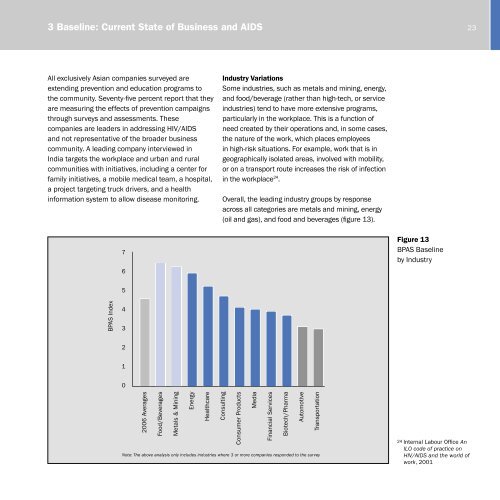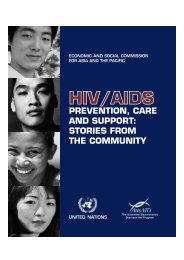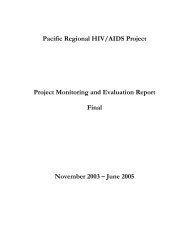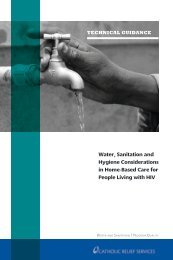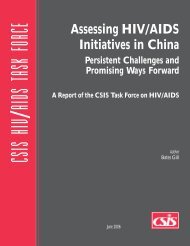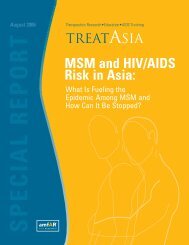The State of Business and HIV/AIDS (2006) - Booz Allen Hamilton
The State of Business and HIV/AIDS (2006) - Booz Allen Hamilton
The State of Business and HIV/AIDS (2006) - Booz Allen Hamilton
Create successful ePaper yourself
Turn your PDF publications into a flip-book with our unique Google optimized e-Paper software.
3 Baseline: Current <strong>State</strong> <strong>of</strong> <strong>Business</strong> <strong>and</strong> <strong>AIDS</strong><br />
23<br />
All exclusively Asian companies surveyed are<br />
extending prevention <strong>and</strong> education programs to<br />
the community. Seventy-five percent report that they<br />
are measuring the effects <strong>of</strong> prevention campaigns<br />
through surveys <strong>and</strong> assessments. <strong>The</strong>se<br />
companies are leaders in addressing <strong>HIV</strong>/<strong>AIDS</strong><br />
<strong>and</strong> not representative <strong>of</strong> the broader business<br />
community. A leading company interviewed in<br />
India targets the workplace <strong>and</strong> urban <strong>and</strong> rural<br />
communities with initiatives, including a center for<br />
family initiatives, a mobile medical team, a hospital,<br />
a project targeting truck drivers, <strong>and</strong> a health<br />
information system to allow disease monitoring.<br />
Industry Variations<br />
Some industries, such as metals <strong>and</strong> mining, energy,<br />
<strong>and</strong> food/beverage (rather than high-tech, or service<br />
industries) tend to have more extensive programs,<br />
particularly in the workplace. This is a function <strong>of</strong><br />
need created by their operations <strong>and</strong>, in some cases,<br />
the nature <strong>of</strong> the work, which places employees<br />
in high-risk situations. For example, work that is in<br />
geographically isolated areas, involved with mobility,<br />
or on a transport route increases the risk <strong>of</strong> infection<br />
in the workplace 24 .<br />
Overall, the leading industry groups by response<br />
across all categories are metals <strong>and</strong> mining, energy<br />
(oil <strong>and</strong> gas), <strong>and</strong> food <strong>and</strong> beverages (figure 13).<br />
7<br />
6<br />
Figure 13<br />
BPAS Baseline<br />
by Industry<br />
5<br />
BPAS Index<br />
4<br />
3<br />
2<br />
1<br />
0<br />
<strong>2006</strong> Averages<br />
Food/Beverages<br />
Metals & Mining<br />
Energy<br />
Healthcare<br />
Consulting<br />
Consumer Products<br />
Media<br />
Financial Services<br />
Biotech/Pharma<br />
Automotive<br />
Transportation<br />
Note: <strong>The</strong> above analysis only includes industries where 3 or more companies responded to the survey<br />
24 Internal Labour Office An<br />
ILO code <strong>of</strong> practice on<br />
<strong>HIV</strong>/<strong>AIDS</strong> <strong>and</strong> the world <strong>of</strong><br />
work, 2001


